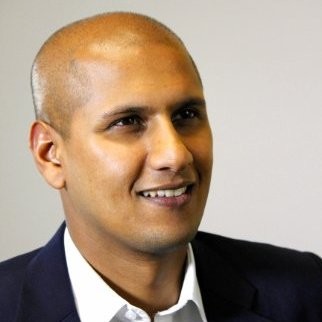What does ESG mean to you?
Sustainable development is the pathway to the future we want for all. It offers a framework to generate economic growth, achieve social justice, exercise environmental stewardship and strengthen governance. Ban Ki-moon
A good starting point in this topic is the UN Sustainable Development Goals (SDG) and Principles of Responsible Investment (PRI). Both have played a big role in the course of ESG investing in recent years, with many institutions using the SDGs as a platform to develop their own ESG policies, and the PRIs helping to clarify that the fiduciary duty of asset managers does not exclude ESG considerations. The Climate Bonds Initiative’s latest State of the Market report is a good overview of green bonds and discusses some of the key issues facing the asset class.
Schroders published a comprehensive survey* on how their investors think about responsible investing. And McKinsey charts how sustainable investing has become the new normal in From ‘why’ to ‘why not' and also puts impact investing under the microscope.
If you haven’t seen Toby Eccles’s Ted Talks video on his innovative investment vehicle, social impact bonds, then you may soon be in the minority of ESG investors; it has nearly a million views.
A recent lecture* by the late Stephen Hawking on the future of humanity and the importance of sustainability is very much worth the time. Hawking concludes it’s time to explore other solar systems.
Does ESG make a difference to returns?
The United States and Asia are similar when it comes to having conversations about ESG. They only want to look at how it affects their ability to make money or lose it. Joy Franscinella, PRI
This question poses much controversy. For example, if we look at the link between just corporate governance and equity returns, there is still plenty of argument after years of research.
The seminal 2003 paper by three American academics, Corporate Governance & Equity Prices, showed that alpha increases as corporate governance quality rises. But that far from settled the debate. Those findings were re-examined in 2008, with the conclusion that the definition of ‘industry’ was not well-specified and the results were not statistically significant. In 2012, a study controlled the original 2003 paper for industry clustering and judged that while industry performance could not be ruled out as a contributing factor to the results, there was little evidence to suggest that industry adjustments alone could explain the relationship between governance and equity prices. The most recent twist came in 2015 when researchers uncovered errors and definitional issues in the raw data sets underpinning the original study.
As for other aspects of ESG beyond governance or asset classes outside equities, there is a dearth of rigorous performance analysis. It’s notoriously difficult to make statistically-based conclusions on ESG because most comprehensive studies focus only on the US market, and long time lines are needed to assess ESG impacts properly. Another drawback is that definitions, the quantification of ESG and study parameters are not universally agreed. In other words, we haven’t yet worked out how to isolate the ESG effect.
What we can say is that, logically and anecdotally, good ESG performance is to have a positive impact on long-term returns because transparent, sustainable, and meritocratic organisations distribute benefits and risks more equitably over time than average companies. This broadly fits with the aggregated findings of a 2015 ESG and financial performance* meta study, which holds significant sway because of its sheer comprehensiveness - it combines the results of 2,200 individual studies.
How to incorporate ESG into investing
If we and others were to sell our shares, those shares would no doubt find other willing buyers. And such a strategy would diminish the influence or voice we might have with this industry. Drew Faust, president of Harvard University, on fossil fuel stocks
Asset classes are diverse and so are the techniques to incorporate ESG into investing. The esteemed CFA Institute has published a handy guide to integrating ESG into equity and credit analysis. For more granular detail, Goldman Sachs produced a note* on how portfolio managers can integrate ESG into their approach to result in an ‘alpha-additive complement of risk analysis’.
On a factor level, Cornerstone Capital shows how ESG considerations can be applied to portfolio factors by protecting against sectors with high ESG risk. And for investors worried about how new and developing climate rules are affecting risk exposures in their portfolios, Hedging Climate Risk offers a method to protect them.
The OECD presents a comprehensive review of ESG implementation aimed at everyone from policy makers to investors. Meanwhile Cliff Asness of AQR concludes* that if you’re going to screen negatively for ESG factors then don’t expect to beat the market.
Academic work on the subject
Our population and our use of the finite resources of planet Earth are growing exponentially, along with our technical ability to change the environment for good or ill. Stephen Hawking
A recent, influential study* found companies that disclosed more ESG policies were likely to be involved in more, not less, ESG controversy in the following years. The paper also notes that ESG indices are more prone to controversies than ESG-unaware benchmarks. The reason could be that firms with ESG controversies tend to create new ESG policies, so by self-selection are more likely to have controversies. This could suggest that segregated ESG analysis and ESG indices by themselves are less effective than an investment process which incorporates case-by-case, front-to-end, embedded ESG considerations.
Why and How Investors use ESG Information, by Oxford and Harvard academics, is a fascinating survey of senior investment professionals’ motivations for taking into consideration ESG factors. It finds the most important reasons are investment performance, followed by client demand, company change and ethics.
After recent interventions by activist investors on ESG grounds, such as Jana Partners and California State Teachers’ Retirement System (CalSTRS) jointly urging Apple to consider how its products affect children, its worth reading Elroy Dimson’s paper on what makes corporate responsibility engagements successful. Dimson, of London Business School, finds that large, mature and underperforming companies are most likely to be targeted while collaboration between activists improves success rates.
Books on the subject
Poverty is the worst form of violence. Mahatma Gandhi
The Smartest Guys in the Room spills the beans on how governance went completely haywire at Enron. Not only was the company riven with conflicts and outright fraud, but the investment community missed or ignored the numerous signs of rot.
Banker to the Poor* is the story of Grameen Bank, founded by Nobel Prize winner Muhammad Yunus. Visionary Yunus established the institution and kicked off the modern-day microfinance movement.
Something lighter - film and fiction
Gandhi*, the excellent Oscar-winning epic, touches not only on Gandhi’s well-known activism in India, but also his formative years as a lawyer in South Africa, where he used techniques of non-violent protest and resisting discriminatory laws, inspiring many of the later movements against Apartheid.
Environmental films are plentiful with Erin Brockovich (contaminated water), Wall-E (contaminated land), Michael Clayton (contaminated food) and Zombieland (contaminated humans?). But our favourite, in a somewhat warped way, is Steven Seagal’s eco-warrior-defends-native-American-land-action-adventure, On Deadly Ground (literally) - it was Seagal’s first (and thankfully last) directorial effort.
A Manchester Strike by Harriet Martineau, published 1835, is the first work of fiction to present industrial strife, rather than the more well-known North and South, by Elizabeth Gaskel, written some 20 years later. Both deal with low wages and employee exploitation in the North of England. Martineau, incidentally, recommends workers have fewer children to reduce labour supply and drive up wages.
Finally, we could all learn from the everyday ESG integration of The Wombles - the ultimate green family, pursuing implementation policies to improve their local environment, whether it’s Tobermory’s recycling, Madame Cholet’s organic food sourcing, or Great Uncle Bulgaria’s all-round clean living.
Highly recommended list
- What investors think about responsible investing survey - Schroders
- The future of humanity - Stephen Hawking
- ESG and Financial Performance - Friede, Busch and Bassen
- The PM’s Guide to the ESG Revolution - Goldman Sachs
- Virtue is its Own Reward - Cliff Asness, AQR
- A Pitfall in Ethical Investing - Gerald Garvey
- Banker to the Poor - Muhammad Yunus
- Gandhi - directed by Richard Attenborough






































